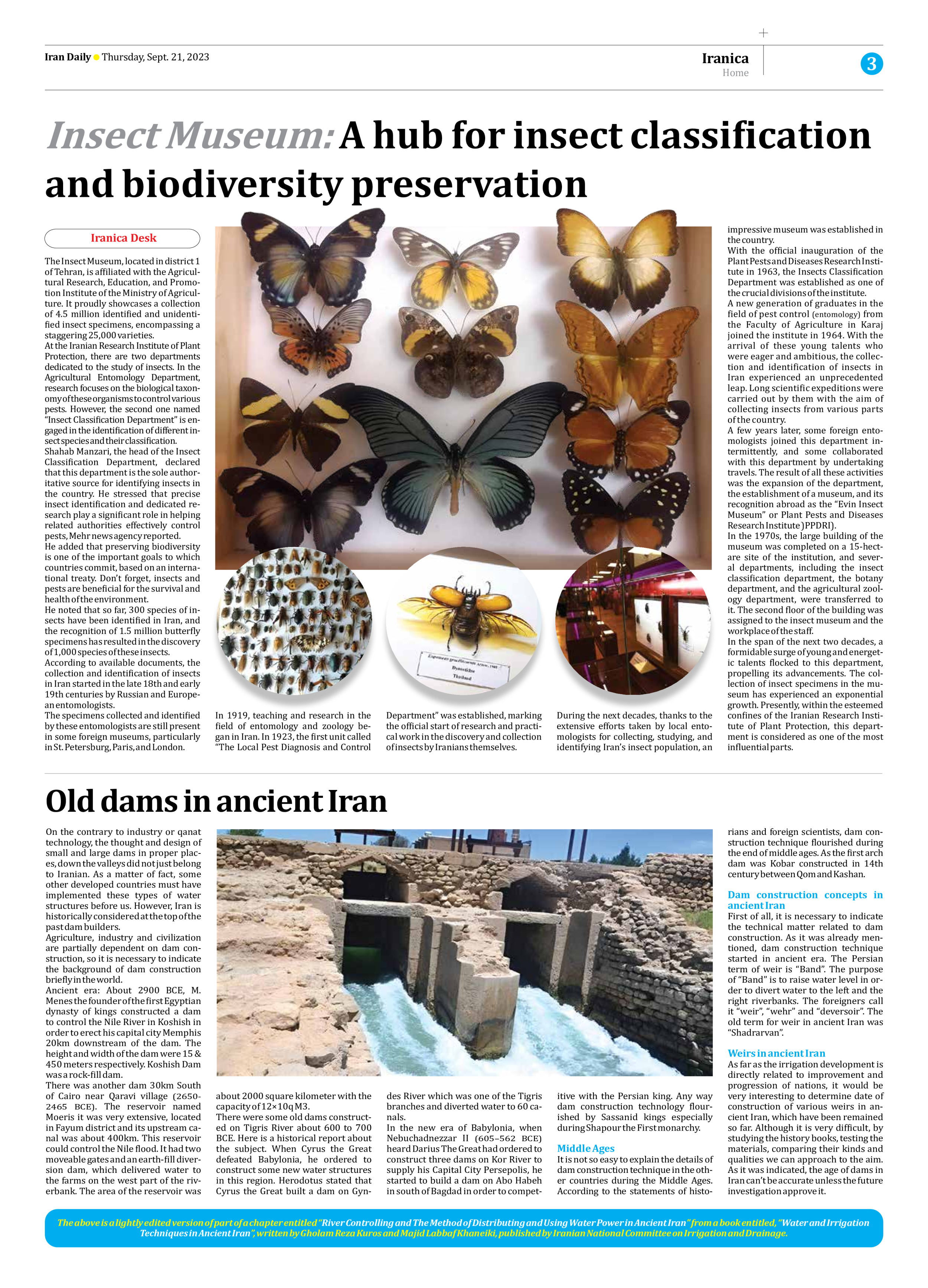
Insect Museum: A hub for insect classification and biodiversity preservation
The Insect Museum, located in district 1 of Tehran, is affiliated with the Agricultural Research, Education, and Promotion Institute of the Ministry of Agriculture. It proudly showcases a collection of 4.5 million identified and unidentified insect specimens, encompassing a staggering 25,000 varieties.
At the Iranian Research Institute of Plant Protection, there are two departments dedicated to the study of insects. In the Agricultural Entomology Department, research focuses on the biological taxonomy of these organisms to control various pests. However, the second one named “Insect Classification Department” is engaged in the identification of different insect species and their classification.
Shahab Manzari, the head of the Insect Classification Department, declared that this department is the sole authoritative source for identifying insects in the country. He stressed that precise insect identification and dedicated research play a significant role in helping related authorities effectively control pests, Mehr news agency reported.
He added that preserving biodiversity is one of the important goals to which countries commit, based on an international treaty. Don’t forget, insects and pests are beneficial for the survival and health of the environment.
He noted that so far, 300 species of insects have been identified in Iran, and the recognition of 1.5 million butterfly specimens has resulted in the discovery of 1,000 species of these insects.
According to available documents, the collection and identification of insects in Iran started in the late 18th and early 19th centuries by Russian and European entomologists.
The specimens collected and identified by these entomologists are still present in some foreign museums, particularly in St. Petersburg, Paris, and London.
In 1919, teaching and research in the field of entomology and zoology began in Iran. In 1923, the first unit called “The Local Pest Diagnosis and Control Department” was established, marking the official start of research and practical work in the discovery and collection of insects by Iranians themselves.
During the next decades, thanks to the extensive efforts taken by local entomologists for collecting, studying, and identifying Iran’s insect population, an impressive museum was established in the country.
With the official inauguration of the Plant Pests and Diseases Research Institute in 1963, the Insects Classification Department was established as one of the crucial divisions of the institute.
A new generation of graduates in the field of pest control (entomology) from the Faculty of Agriculture in Karaj joined the institute in 1964. With the arrival of these young talents who were eager and ambitious, the collection and identification of insects in Iran experienced an unprecedented leap. Long scientific expeditions were carried out by them with the aim of collecting insects from various parts of the country.
A few years later, some foreign entomologists joined this department intermittently, and some collaborated with this department by undertaking travels. The result of all these activities was the expansion of the department, the establishment of a museum, and its recognition abroad as the “Evin Insect Museum” or Plant Pests and Diseases Research Institute )PPDRI).
In the 1970s, the large building of the museum was completed on a 15-hectare site of the institution, and several departments, including the insect classification department, the botany department, and the agricultural zoology department, were transferred to it. The second floor of the building was assigned to the insect museum and the workplace of the staff.
In the span of the next two decades, a formidable surge of young and energetic talents flocked to this department, propelling its advancements. The collection of insect specimens in the museum has experienced an exponential growth. Presently, within the esteemed confines of the Iranian Research Institute of Plant Protection, this department is considered as one of the most influential parts.







